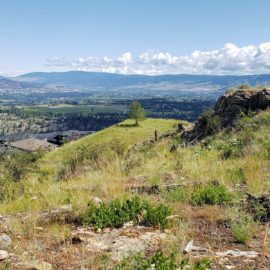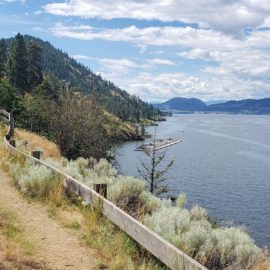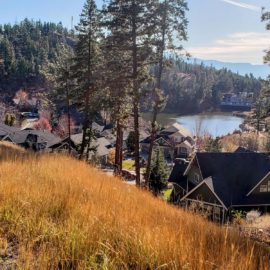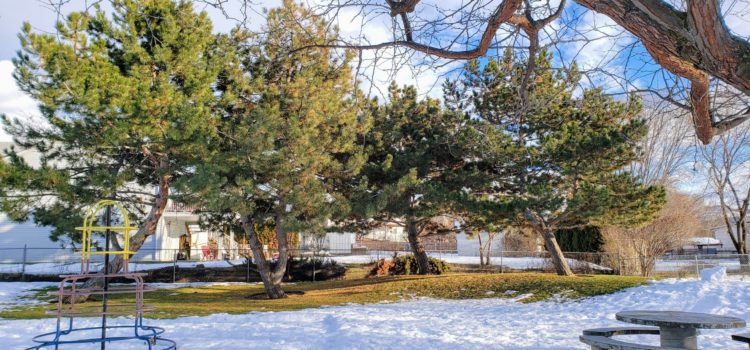
Kelowna Parks Challenge – Trip #21
This week, as part of my Kelowna Parks Challenge, my wife, Jen, and I explored the Hollydell neighbourhood in southwest Rutland. I visited all four parks there, and have returned to tell you all about it!
Read on for my impressions and reflections.
The Trip
For this adventure, we travelled through the part of Rutland south of Highway 33 and from Hollywood Road east. Unlike my previous Rutland adventure, where I started in the commercial part of the urban centre and travelled through both multi-family and single-family residential zones, this week’s neighbourhood was almost exclusively zoned for detached single-family houses.
The land in Rutland is relatively flat. Like all of lowland Kelowna, it was at the bottom of glacial Lake Penticton several thousand years ago. It is slightly higher in elevation than the neighbourhoods closer to Okanagan Lake, so it doesn’t flood much anymore. Judging from the trees in Rutland Lions Park, this area used to be covered by open ponderosa pine parkland, but for the last few decades, it has been covered by suburban sprawl.
Hollywood Park
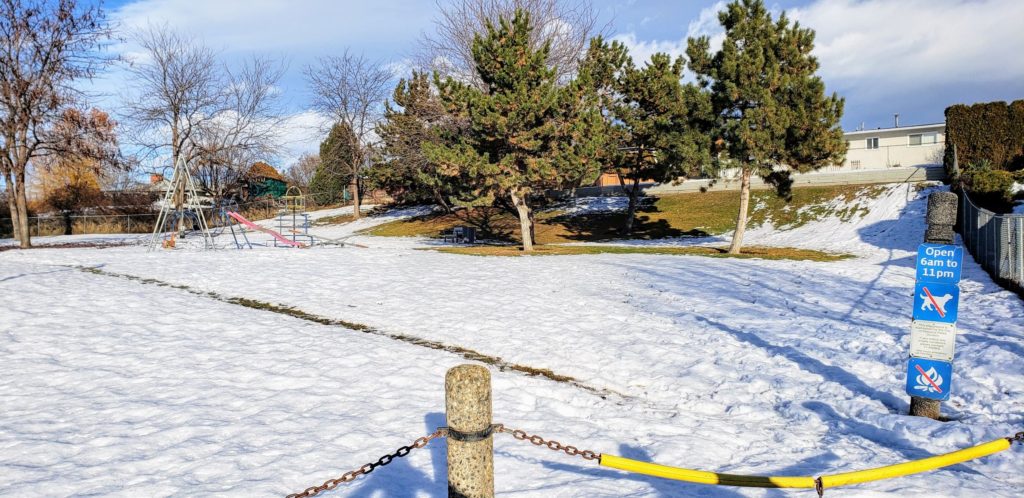
This was the first of three very similar parks I saw this week. All appear to have been designed and built in the 1970s when the neighbourhood was developed. They all have a playground, a picnic table, a lawn, and a few trees. This park is distinguished by the significant hill along its east side. Evidence in the snow told me local residents had been sledding there.
This is a good-sized, attractive park. Perhaps its only downside is its location on Hollywood Road. Along with Rutland Road, Hollywood is one of the main north/south arterials in the area, so the presence of traffic and its attendant noise was constant during my visit.
Washrooms and Drinking Fountains: There is no drinking fountain in this park. There is no washroom in this park.
Dog Rules: Because is it taken up by a children’s playground and has no trails, dogs are not allowed in this park.
Moraine Park
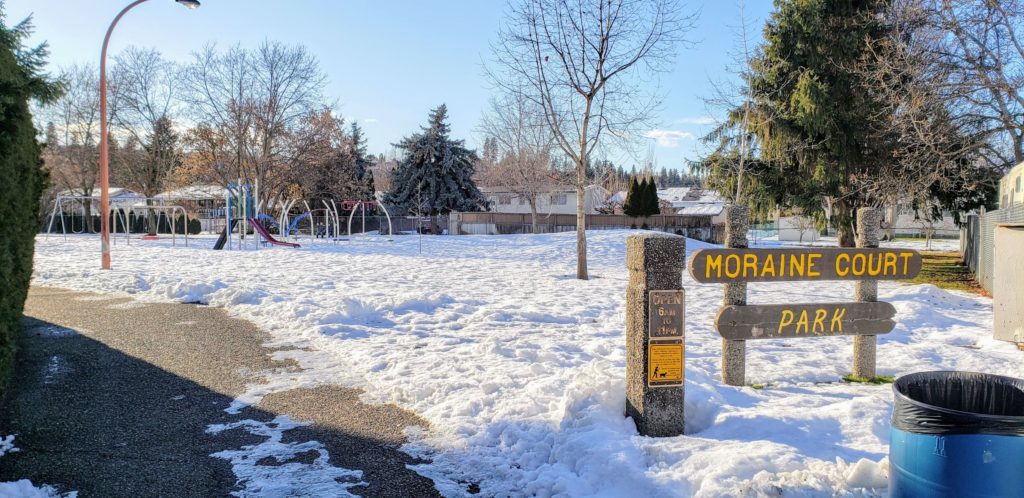
Though this park was similar in design to other parks we saw this week, it had one special feature that made it stand out. Other than corner entrances on Moraine Court and Mitchell Road, the borders of this park do not touch city roads. This means it is delightfully protected from the dangers and the noise of urban traffic. No wonder it was the only park we saw that day to have children playing in it!
The two corner entrances are connected by a walkway that runs along the east side of the park. This means the park will be safer due to the presence of pedestrians who are passing through. All in all, this park was impressive for a mid-twentieth century neighbourhood park.
Washrooms and Drinking Fountains: There is no drinking fountain in this park. There is no washroom in this park.
Dog Rules: Dogs are allowed in this park, but only on-leash and on the walkway.
Hollydell Park
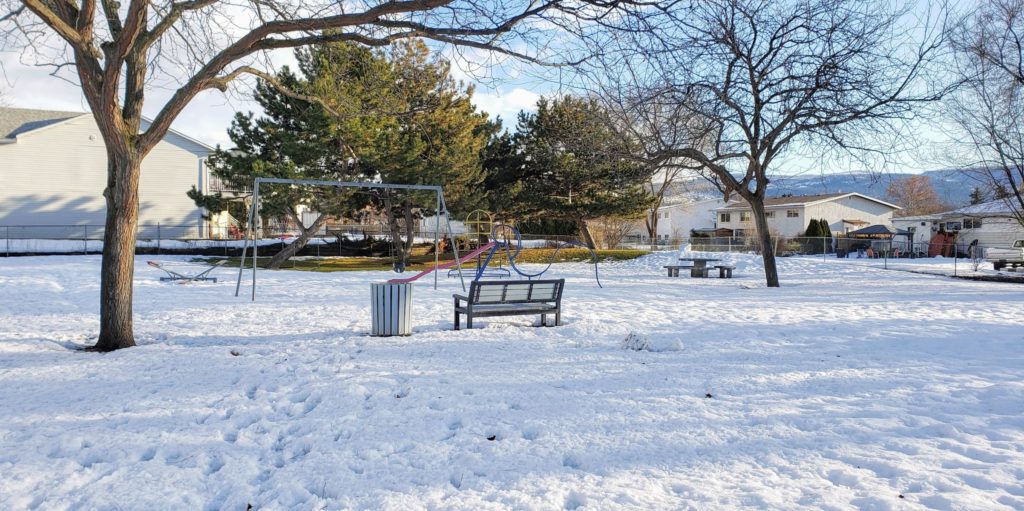
The third park of the day to feature the same design features. This park also had a playground, a picnic table, a lawn, and some trees on a rectangular lot.
This park doesn’t have a hill like Hollywood Park or a protected location like Moraine Park, but in its favour, it is located on Hollydell Road, which gives it good visibility. Hollydell is a secondary arterial so there is a little bit of traffic, but nothing like the traffic on Hollywood.
Washrooms and Drinking Fountains: There is no drinking fountain in this park. There is no washroom in this park.
Dog Rules: Because is it taken up by a children’s playground and has no trails, dogs are not allowed in this park.
Davie Park
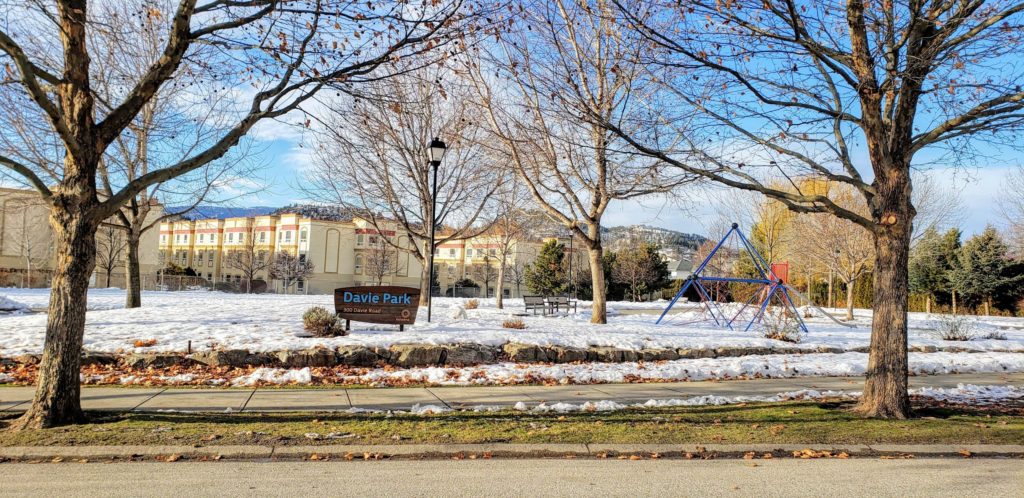
This beautiful park has a much more recent design than the other three parks we explored this week. Though its surrounding neighbourhood is no newer, several features of this park show it was likely designed in this century. In particular, I noted the oval walking path that takes up most of the park. As we saw in Mugford Park and others, twenty-first-century park designers seem to prefer ovals over rectangles.
It is difficult to tell in the winter, but this park looks like it likely has some nice decorative plantings come the springtime. In addition to its walking path and playground, it has a long walkway to connect it to Gerstmar Road to the west.
Washrooms and Drinking Fountains: There is no drinking fountain in this park. There is no washroom in this park.
Dog Rules: Dogs are allowed in this park, but only on-leash and on the walkway.
Reflections
Rutland
Despite its seemingly sprawling nature, I have already seen all the parks in the south half of Rutland, ie. south of Highway 33, except Belgo Park. It has given me a fairly clear impression of the neighbourhood’s dominant traits. In its residential character, it is not so different from some of the other 1970’s era neighbourhoods I have explored, such as Bankhead and the area south of Capri-Landmark. The land is flatter or drier than some places, and some of the lots seem larger, but the main thing that appears to drive the housing prices and the attendant demographic profile of the community appears to be the distance from Okanagan Lake.
In future weeks I will explore north Rutland, including the Rutland High School and Recreation Centre, Ben Lee Park, and the Chichester Wetland, so watch out for that. My expectation is that the character of the residences will be consistent with that of south Rutland, but I would be happy to be surprised.
Neighbourhood Parks
Neighbourhood parks play an important role in a city’s overall parks strategy. It is widely believed that proximity to green space correlates with general well-being, and neighbourhood parks deliver that proximity directly. These might not be fabulous destination parks, attracting visitors from across the city, but they perform an important public health function for the people that live near them.
For that reason, I do not feel the need to disparage a seeming lack of imagination in the design of the parks this week. From a perspective of functionality, it doesn’t matter if they were all very similar. They were all well designed to do their job of providing an important service to nearby residents.
Conclusion
Four parks in a week means I’m staying on track. With these parks checked off, I have now visited ninety-six of the two hundred three parks on the Official List in 167 days, or 47% of the parks in 46% days.
I don’t mind cutting it so close in the winter. It might be risky to leave so many parks to the spring, but I have a few big weeks planned for then.
Can’t wait to see what’s next!

